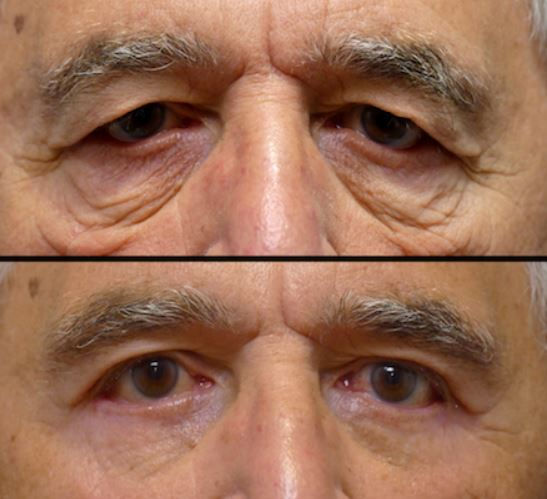The Evolution of Canthoplasty: From Tradition to Modern Techniques
- Eyes Defined
- Sep 6, 2024
- 4 min read

Canthoplasty, a specialized oculoplastic procedure, has undergone a remarkable evolution, transitioning from rudimentary methods to advanced surgical techniques. Initially developed to correct eyelid deformities, canthoplasty has now gained popularity for both reconstructive and cosmetic purposes. This article delves into the historical evolution of canthoplasty, tracing its roots from ancient practices to the modern innovations that define the procedure today.
The Origins of Canthoplasty
The origins of canthoplasty can be traced back to ancient civilizations, where early healers and physicians sought to repair eyelid deformities. Historical records from ancient Egypt and Greece indicate that primitive procedures were performed to tighten the skin around the eyes, using threads to improve both visual function and aesthetic appearance. These early attempts were rudimentary, often resulting in limited success and short-lived results. Despite their simplicity, these ancient practices laid the groundwork for the development of more sophisticated techniques in the centuries that followed.
Developments in the Middle Ages to the 19th Century
The Middle Ages saw modest advancements in surgical techniques, with much of the knowledge being preserved and expanded upon by Arabic physicians. These scholars played a crucial role in advancing medical practices, including those related to the eyes. However, it was during the Renaissance that European surgeons began to take significant strides in refining eyelid surgeries. The advent of anesthesia and antiseptic techniques in the 19th century marked a turning point for canthoplasty. Surgeons like Albrecht von Graefe and others introduced methods that are now considered the precursors to modern canthoplasty procedures. These developments were pivotal in enhancing the safety and effectiveness of eyelid surgeries, setting the stage for the transformative innovations of the 20th century.
20th Century Innovations
The 20th century heralded a transformative era for canthoplasty, driven by a deeper understanding of eyelid anatomy and a surge in surgical innovation. During the 1950s and 1960s, surgeons introduced techniques that remain foundational to contemporary canthoplasty procedures. One such innovation was the repositioning of the lateral canthal tendon, a technique that significantly improved the durability and precision of the results. This period also saw the introduction of synthetic materials and sutures, further enhancing the accuracy and longevity of canthoplasty outcomes. These innovations laid the groundwork for the modern techniques that continue to evolve today.
Modern Canthoplasty Techniques
In the 21st century, canthoplasty has been refined into a precise and intricate art form, aided by technological advancements and a more profound understanding of eyelid anatomy. Modern canthoplasty encompasses a range of specialized techniques, each tailored to address specific aesthetic or reconstructive needs:
Lateral Canthoplasty: This procedure is often performed to elongate the eye horizontally, creating an almond-shaped appearance that is aesthetically favored in various cultures. It involves the repositioning or tightening of the lateral canthus to achieve the desired eye shape.
Medial Canthoplasty: Targeting the inner corner of the eye, medial canthoplasty is sometimes used to correct epicanthic folds, which are prevalent in Asian eyelid anatomy. This procedure can enhance the symmetry and appearance of the eyes.
Canthopexy: A less invasive alternative to full canthoplasty, canthopexy involves a slight lift of the lateral canthal angle without extensive tissue removal. It is often chosen for its subtlety and quicker recovery time.
These modern techniques have not only improved in terms of safety and effectiveness but also in ensuring more natural results with minimal scarring. The ability to customize these procedures to the unique needs of each patient has contributed to the growing popularity of canthoplasty in both reconstructive and cosmetic contexts.
Technological Advancements in Canthoplasty
The integration of advanced technology has further refined canthoplasty procedures. The use of laser therapy, high-definition imaging, and cutting-edge suture materials has revolutionized the field. Laser canthoplasty, for instance, allows for precise cutting and coagulation with minimal bleeding, reducing postoperative recovery time and improving overall outcomes. High-definition imaging provides surgeons with detailed visual guides, enhancing the accuracy and precision of the surgery. These technological advancements have played a crucial role in making canthoplasty safer, more effective, and more accessible to a broader range of patients.
Applications in Reconstructive and Cosmetic Surgery
While canthoplasty was initially focused on reconstructive surgery to address deformities and injuries, it has since become a sought-after procedure in the realm of cosmetic surgery. Patients seeking aesthetic enhancements can benefit from canthoplasty’s ability to adjust the tilt and shape of the eyes, which can have a profound impact on the overall facial appearance. This shift towards cosmetic applications has popularized canthoplasty among individuals looking to improve facial symmetry and achieve their desired aesthetic.
Challenges and Ethical Considerations
Despite the significant advancements in canthoplasty, the procedure is not without its challenges. Managing patient expectations, ensuring the long-term durability of results, and addressing potential complications are critical aspects of the surgical process. Ethical considerations also play a vital role, particularly in cosmetic surgery, where the necessity of the procedure must be carefully weighed against the potential risks and realistic outcomes. Surgeons must navigate these challenges with skill and sensitivity, ensuring that patients are well informed and that their decisions are guided by both aesthetic goals and medical necessity.
Conclusion
From its ancient origins to the sophisticated procedures performed today, canthoplasty has evolved remarkably over the centuries. Each development in technique and technology has contributed to a deeper understanding of eyelid anatomy and a greater ability to reshape and restructure the eyelid for both reconstructive and cosmetic purposes. As surgical techniques continue to evolve, canthoplasty stands as a testament to the dynamic and ever-advancing field of oculoplastic surgery, where historical practices are seamlessly blended with cutting-edge innovations to meet the diverse needs of patients. Take the first step towards beautiful eyes—visit Eyes Defined or call us today to schedule your appointment.






Comments